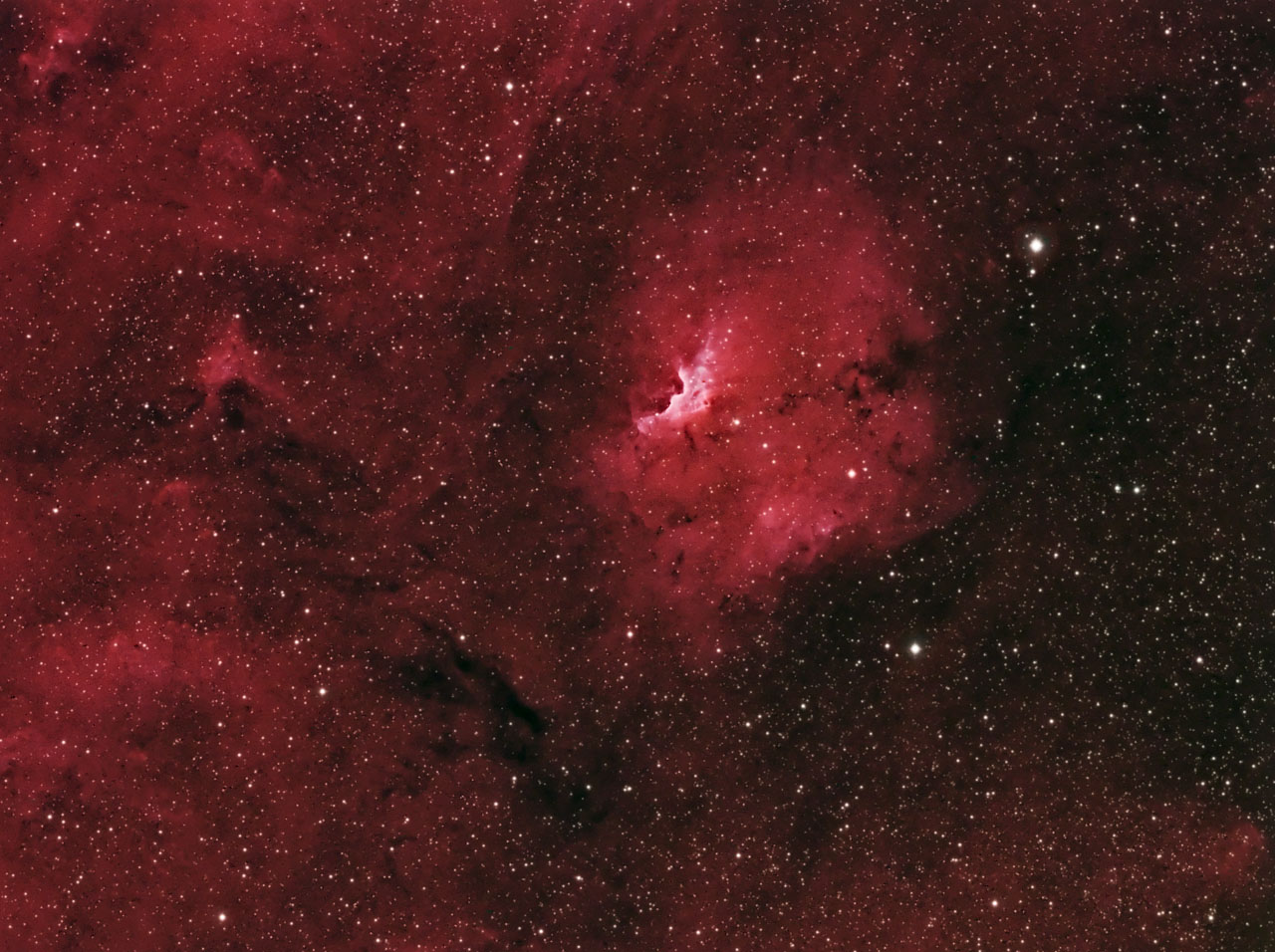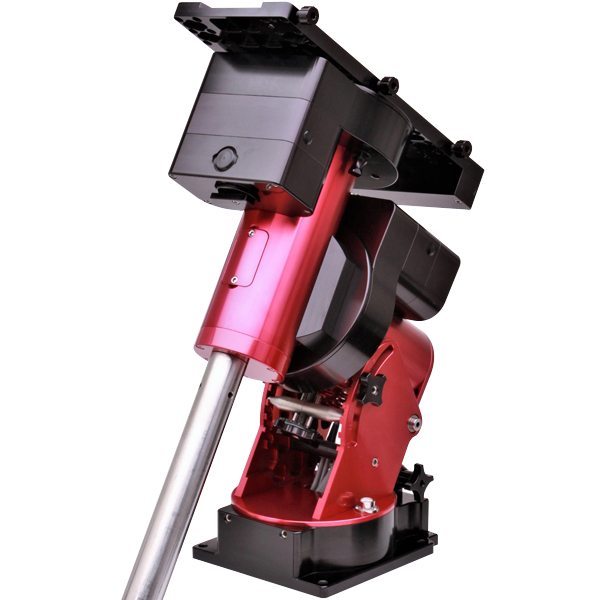This is Sh2-135, another obscure nebula from the Sharpless catalog. It’s almost entirely red because it’s almost entirely made up of hydrogen – and even the H-alpha signal is pretty weak. The brightest part of it (near the center) also contains a bit of Sulfur, which I have assigned to blue-green, so it is leaning very slightly toward magenta, but still looks pretty much red. In summary, the hydrogen was weak, the sulfur was extremely weak, and the oxygen was non-existent! I integrated about 11 hours of exposure time here, including the O-III, but it would look pretty much the same without the O-III. The bright nebula is also cataloged as LBN 492, and there are several regions of dark nebulosity as well, such as the large dark regions on the left.
I actually processed this several times to try to get a cleaner image. I thought there must be something wrong with my calibration – either the process or the calibration files. But after doing all new calibration files and carefully applying them, there was still an unusually high amount of noise that had to be cleaned up through manual editing and selective low-pass filtering. The bottom line is that when the signal is this weak you have to stretch it a lot, and that is bound to reveal more noise.
In other “news”, I recently ordered a new mount, the Paramount MyT:
This will replace my 6 year old A-P Mach1, which may surprise long-time readers of this blog because I have always loved the Mach1. In truth, there is no big reason to make this change, as the two mounts have very similar specifications. But there are a couple of features of the MyT that I like, and, of course, it’s new. And it’s red! Who could resist? One big factor in in this decision is that I’ve been seeing a lot of remote observatories lately, and notice that something like 80% of the mounts in these observatories are from Paramount. They specialize in “robotic” mounts – ones that are designed to be operated in a more automated manner.
Unfortunately, the MyT probably won’t be here in time for the next star party (July New Moon), but perhaps it’s best that I not try to use brand new equipment when I need to get work done!

